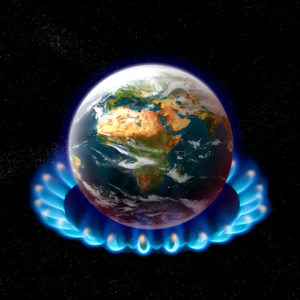Editor’s Note: For another viewpoint, see: Counterpoint: Let’s Really Celebrate the 50th Earth Day With Some Humble Pie
Scientists warned our leaders about the danger. Our leaders ignored them, undermined them and disbanded their programs.
It was clear that politically difficult choices would be necessary to save thousands — perhaps even millions — of lives, and that the earlier we acted, the better off we would be. Continuing business as usual would be deadly.
Our leaders knew all this, and yet almost all of them failed to act — imperiling all of us, but especially the most vulnerable: people of color, indigenous people, the medically fragile, the disabled, the unhoused and those earning poverty wages.
The parallels between the COVID-19 crisis and the climate crisis are unmistakable.
Just as President Trump and governors like Florida’s Ron DeSantis failed to act boldly and decisively to protect people and workers from the ravages of the coronavirus, they and like-minded predecessors spent the last four decades missing opportunities to flatten the curve of human-caused global warming.
Wednesday, April 22, is the 50th anniversary of Earth Day. It’s a historic day, and we’ll be using it, in part, to take stock of the past. After decades of denial and delay, there’s still a lot of work to be done to get us off the path of planetary destruction. But there are also reasons for optimism.
Over the past decade, more than 300 coal plants have closed, and many of them have been replaced by affordable clean energy.
The price of renewable energy is now so low that nearly half of the world’s coal plants will be unprofitable this year. It’s clear that we’re moving beyond coal and all dirty fuels faster than would have seemed possible even a few years ago.
Earth Day will also be a time to look forward and demand in innovative ways the just and equitable future we all deserve.
The youth leaders planning for the biggest climate strike yet changed their plans to a 72-hour livestream of strikers, divestment activists, and everyday people invested in the health of this planet. For the first time, Earth Day will take place entirely online.
Participants in Earth Day Live will use our 72 hours together to pressure all the centers of power in this country to take rapid action to protect our homes and our families against the floods, fires and storms that are already locked in — and to keep worse ones from becoming inevitable. We have the solutions, and we are building the political power needed to implement them.
On Earth Day, the youth organizers of the climate strike will harness the power of storytelling and community-building to offer the world an opportunity to hear from those on the frontlines of both crises. Their stories will help build a narrative about how we survive times of crisis through solidarity and by caring for one another and our planet.
The next day, we will be confronting those big banks, asset managers and insurers that continue to support the fossil fuel industry. That means challenging their insistence on doing business as usual no matter what’s going on in the world and no matter whose lives are put at risk.
Already, we’ve seen that some of the world’s largest companies, like asset management giant BlackRock, can be moved by moral protest.
The company has pledged to undertake one of the largest-ever divestments from coal, and to place sustainability at the center of its business. With BlackRock playing a leading role in the government’s COVID-19 stimulus efforts, it’s a crucial moment to keep the pressure on.
The third day will be a massive youth voter drive aimed at amplifying young people’s voices leading up to the 2020 elections and beyond. These young people are watching how their leaders respond — or fail to respond — to both the climate crisis and the COVID crisis.
Soon after this livestream, Congress will come back into session to hammer out another COVID-19 stimulus package.
Will legislators take this opportunity to make a down payment on a more just and sustainable economy? Will they seize this chance to put millions of Americans back to work, this time in family-sustaining jobs building the green infrastructure of the future?
We cannot afford to squander this opportunity to make our country stronger and more resilient to future disasters.
As brutal as they are, both the climate crisis and the COVID crisis offer a chance to rewrite the rules of our society and our economy so they work for everyone who lives in this country — not just the wealthy and connected.
The choices we make now will shape our country for decades, if not longer. Earth Day at 50 is a time to come together to demand what we need so all of us can survive the shocks the next decades will bring.
This pandemic has shown what’s possible if we listen to the scientists, and how much death and suffering can be avoided when our leaders respond to those warnings with swift, decisive action.
If nothing else, it has shown us that we’re capable of changing almost everything about how we live in the name of love, solidarity and collective survival.
These are lessons we must return to not only during the Earth Day celebration but during the fight for our future.

